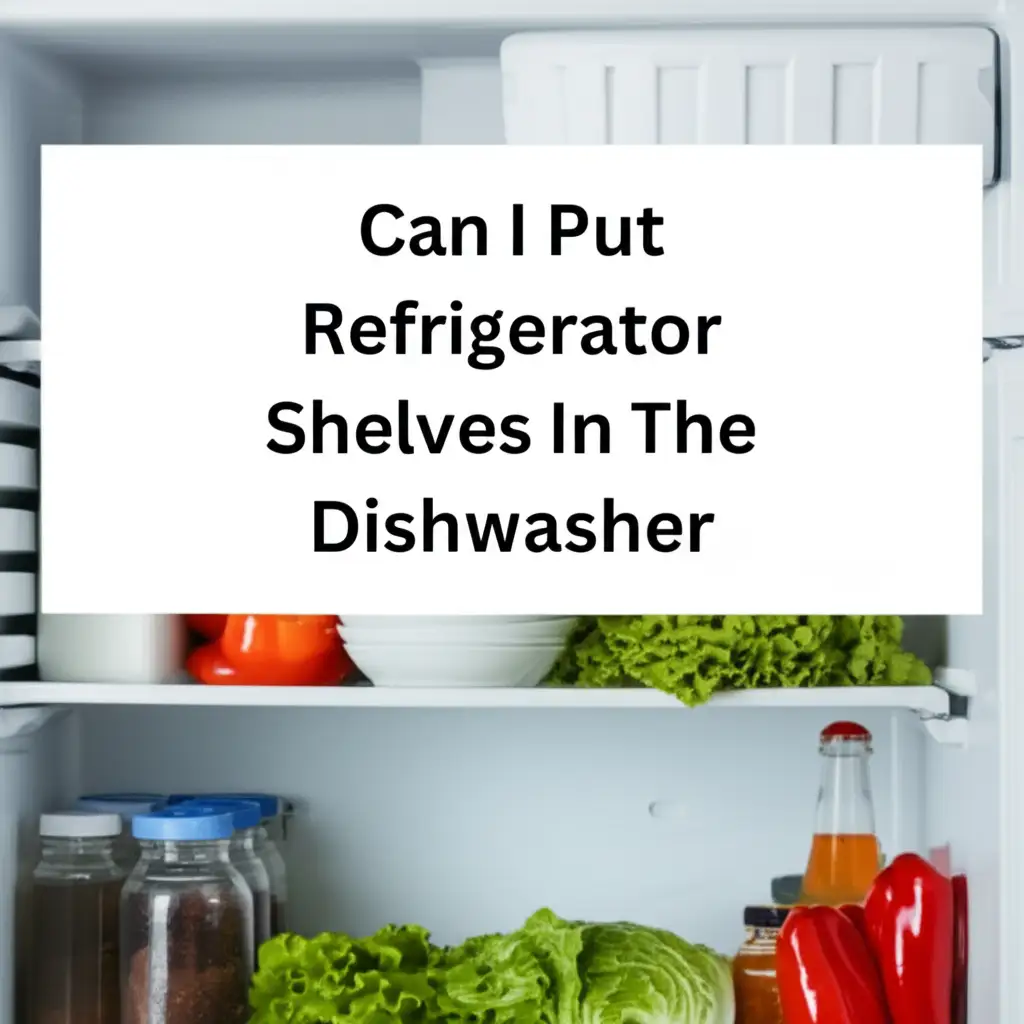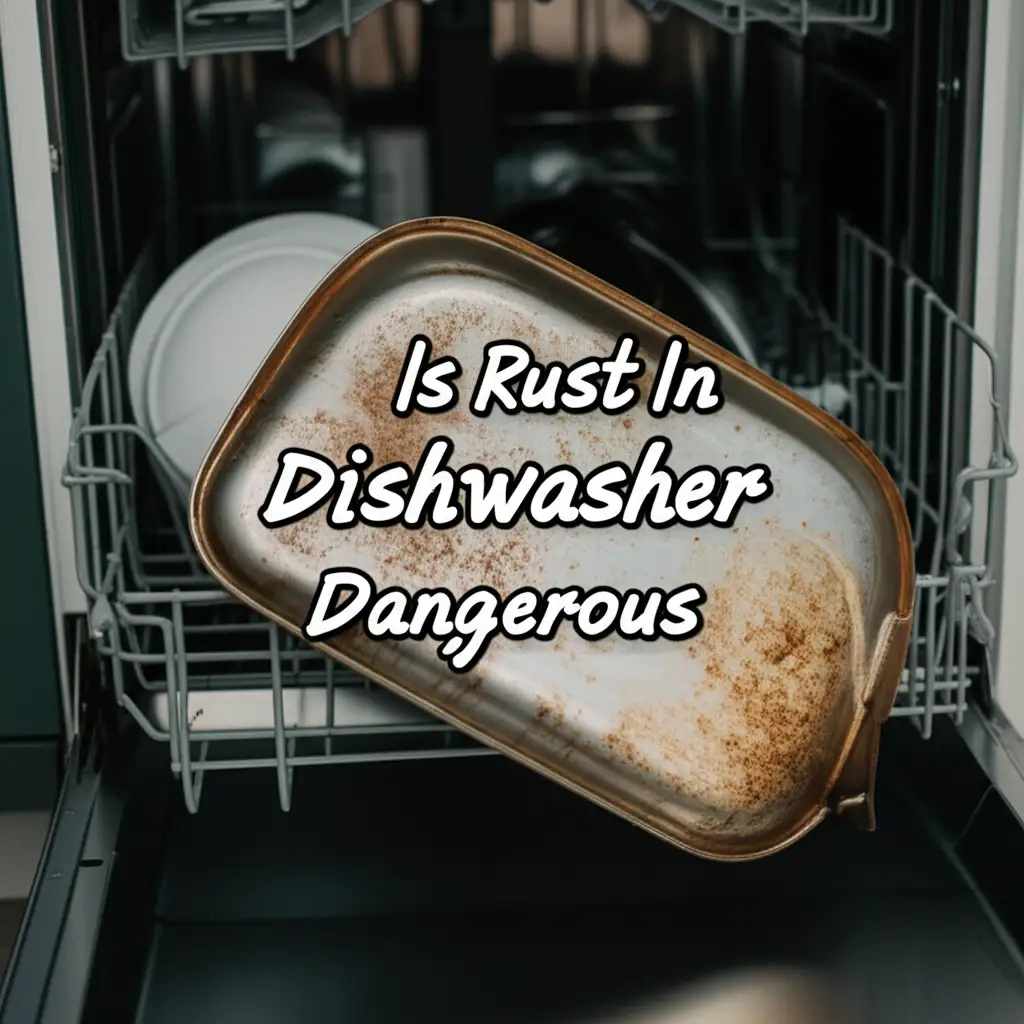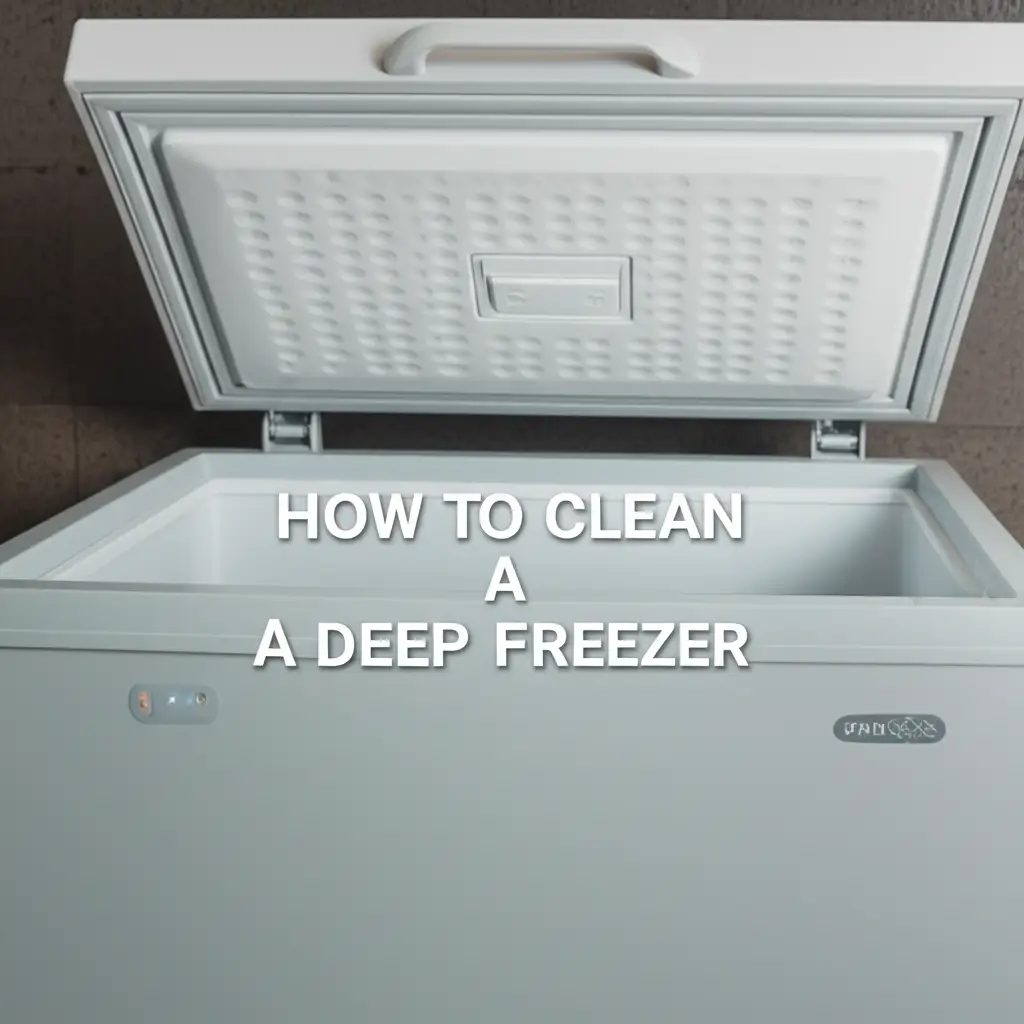· Liora Benning · Home Appliance Care · 23 min read
Can I Put Refrigerator Shelves In The Dishwasher

Can I Put Refrigerator Shelves In The Dishwasher?
You stare at your refrigerator shelves, covered in spills and crumbs. A common thought pops up: “Can I put refrigerator shelves in the dishwasher?” This question often arises during a deep cleaning session. Many people wonder if their modern conveniences can handle this task. You want to make cleaning easier, but you also want to avoid damaging your appliance parts. This article will explore the do’s and don’ts of putting refrigerator shelves in the dishwasher. We will look at different materials, discuss potential risks, and offer the best cleaning methods. Get ready to clean your fridge shelves without worry.
Takeaway:
- Always check your refrigerator’s user manual before putting shelves in the dishwasher.
- Most glass shelves, especially tempered glass, are usually dishwasher safe.
- Plastic shelves and drawers may warp or crack in high dishwasher heat.
- Hand-washing with warm, soapy water is often the safest method for all shelf types.
- Avoid abrasive cleaners and harsh chemicals on any refrigerator component.
You want to clean your refrigerator shelves efficiently. The simple answer depends on the material of the shelves and your appliance’s specific instructions. While some glass shelves can withstand the dishwasher, many plastic components cannot. Always consult your refrigerator’s user manual first to prevent damage. When in doubt, hand-washing remains the safest and most reliable method for cleaning these parts.
Understanding Refrigerator Shelf Materials: Why It Matters
Refrigerator shelves come in various materials. Each material reacts differently to heat and harsh detergents. Knowing what your shelves are made from is the first step. This knowledge helps you decide if the dishwasher is a good option. Ignoring this can lead to damage.
Most modern refrigerators use tempered glass for shelves. Tempered glass is stronger than regular glass. Manufacturers design it to withstand temperature changes. This type of glass is less likely to shatter. However, extreme heat from a dishwasher can still pose a risk. Old or damaged tempered glass may be more vulnerable.
Plastic drawers, door bins, and some shelves are common too. These parts are usually made from different types of plastic. Some plastics are heat-resistant. Others can warp, crack, or become brittle when exposed to high temperatures. You will find various plastic grades. Not all are equal in durability.
Wire racks are also common, especially in older models or freezers. These racks are typically coated metal. The coating prevents rust and makes cleaning easier. Dishwashers can sometimes chip this coating. Once chipped, the metal underneath can rust. This reduces the lifespan of your wire shelves.
Types of Shelf Materials
- Tempered Glass: This glass is strong and resistant to breaking. It handles minor temperature changes well. However, very hot water or rapid cooling can still stress it.
- Plastic (Polycarbonate, Polystyrene, etc.): Plastics vary greatly. Some are durable, others are fragile. High heat is a main concern for plastic parts. They can lose shape easily.
- Coated Wire Racks: These are metal wires with a protective layer. The coating keeps them from rusting. Dishwasher cycles can sometimes be too harsh for this protective layer.
I remember my first time trying to clean refrigerator parts. I assumed everything could go into the dishwasher. That was a mistake. My plastic drawer warped, and I had to buy a new one. This experience taught me the importance of checking materials. Always take a moment to identify what you are dealing with. Your appliance manual provides the best information.
The Dishwasher Dilemma: Risks and Considerations
You might think using the dishwasher is a quick solution for cleaning large, sticky refrigerator parts. While convenient, putting refrigerator shelves in the dishwasher carries risks. Understanding these risks helps you make an informed decision. You want to save time, but not at the cost of damaging your appliance.
High heat is the primary concern when using a dishwasher. Dishwashers use very hot water and a heated drying cycle. These temperatures can exceed what certain materials can withstand. Plastic shelves are especially vulnerable. They can warp, melt, or become brittle. This means they will no longer fit properly in your refrigerator. Imagine trying to slide a warped drawer back into place. It simply won’t work.
Harsh detergents are another factor. Dishwasher detergents are strong. They cut through grease and stuck-on food. These chemicals can be too aggressive for some delicate materials. Over time, they might dull the finish of glass or plastic. They could also corrode the coating on wire racks. You want your shelves to look clean, not cloudy or damaged.
The physical force of water jets also plays a role. Powerful jets in a dishwasher can move items around. If shelves are not loaded correctly, they might clatter against other items or the dishwasher walls. This can cause chips, cracks, or scratches. Glass shelves are particularly susceptible to this kind of impact damage. Broken glass is dangerous and expensive to replace.
Consider the space in your dishwasher. Refrigerator shelves are often large. They might not fit well in a standard dishwasher. Cramming them in can block spray arms. This prevents proper cleaning. It also increases the risk of damage. You need enough room for water to circulate.
I have seen many people face this dilemma. They want a fast clean. But they end up with damaged parts. It is always better to be safe. Evaluate the risks before you load those shelves. If you are unsure, consider hand-washing.
Cleaning Glass Refrigerator Shelves: Dishwasher or Hand Wash?
Glass refrigerator shelves often seem like a good candidate for the dishwasher. They are sturdy and do not absorb odors. However, specific considerations apply before you load them up. Knowing these details ensures your glass shelves stay clear and intact. You want a sparkling clean, not a shattered mess.
Most modern glass refrigerator shelves are made from tempered glass. Tempered glass is designed to withstand a certain amount of thermal stress. This means it can generally handle the temperatures in a dishwasher. However, sudden temperature changes can still be an issue. If a shelf is cold from the refrigerator, putting it immediately into a hot dishwasher can cause thermal shock. This thermal shock might lead to cracking or shattering. Always let glass shelves come to room temperature first.
Look for a “dishwasher safe” label on your shelves or in your refrigerator’s manual. This label confirms the manufacturer’s approval. Without it, you are taking a risk. Older refrigerators might use untempered glass. This glass is much more fragile and should never go in a dishwasher. It will almost certainly break under the heat.
When using a dishwasher for glass shelves, place them carefully. They should lie flat or be angled to prevent them from moving. Do not let them touch other items. Use a gentle cycle if available. Avoid the “sanitize” or “heavy duty” options, as these use extremely high temperatures. A standard wash with a good dishwasher cleaner should suffice. Learn more about using dishwasher cleaner.
I usually prefer to hand-wash my glass shelves. It gives me full control. I use warm, not hot, soapy water. I clean them with a soft cloth. This method prevents any risk of thermal shock or impact damage. It also ensures every spot gets attention. While dishwashers are convenient, they do not always offer the personalized care certain items need.
Hand-Washing Glass Shelves: A Safer Alternative
- Remove everything: Take all food items off the shelf.
- Let it warm up: Allow the glass to reach room temperature. This prevents thermal shock.
- Prepare solution: Fill a sink or tub with warm water and a few drops of dish soap.
- Gentle scrub: Use a soft sponge or cloth to wipe down both sides.
- Rinse thoroughly: Rinse under running water to remove all soap residue.
- Dry completely: Use a clean towel or air dry. Ensure no water spots remain before putting them back.
Plastic Components and Drawers: Are They Dishwasher Safe?
Plastic drawers, door bins, and some shelves are common in refrigerators. These components are incredibly useful for organizing food. However, their material makes them tricky to clean in a dishwasher. You must exercise caution to avoid permanent damage. Not all plastics are created equal when it comes to heat.
Most refrigerator plastics, especially those used for crisper drawers and door bins, are designed for cold temperatures. They are not built to withstand the extreme heat of a dishwasher’s wash cycle or heated drying. When exposed to such high temperatures, these plastics can warp, crack, or even melt. A warped drawer will not slide back into its slot. A cracked door bin can no longer hold items securely. Replacing these parts can be expensive and frustrating.
Always check for a “dishwasher safe” label on each plastic component. This label is usually molded into the plastic itself. If you do not see it, assume it is not dishwasher safe. Your refrigerator’s user manual is also an excellent resource. It will provide specific cleaning instructions for all parts. Following manufacturer guidelines protects your appliance and your wallet.
Even if a plastic part is labeled “dishwasher safe,” it is still wise to use the top rack. The top rack is generally further from the heating element. This reduces the risk of warping. You should also consider using a lower temperature wash cycle or turning off the heated dry option. Air drying is always the safest method for plastics.
I have learned this lesson the hard way. I once put a plastic crisper drawer in the dishwasher. It came out looking like a melted piece of art. It was completely unusable. From that day on, I decided to hand-wash all plastic refrigerator components. It takes a little more time, but it guarantees their safety and longevity.
Safe Cleaning Practices for Plastic Parts:
- Remove all food: Empty the drawer or bin completely.
- Hand-wash preferred: Fill a sink with warm (not hot) water and mild dish soap.
- Gentle scrub: Use a soft cloth or sponge to wipe surfaces. Avoid abrasive scrubbers.
- Rinse well: Rinse under cool or lukewarm running water to remove soap.
- Air dry: Let parts air dry completely before returning them to the refrigerator. This prevents mildew.
- Avoid harsh chemicals: Do not use abrasive cleaners, bleach, or ammonia-based products. These can damage the plastic finish.
Wire Racks and Metal Parts: Cleaning Considerations
Wire racks and other metal components are less common in modern refrigerators, but you might find them in older models or freezers. These parts, often coated, require specific cleaning attention. You need to protect their finish and prevent rust. Using the dishwasher might seem simple, but it has drawbacks for metal.
Many wire racks have a vinyl or epoxy coating. This coating protects the metal from rust and makes it easier to slide items. Dishwashers can be too harsh for these coatings. The high heat, strong detergents, and powerful water jets can cause the coating to chip, peel, or crack. Once the coating is compromised, the exposed metal can rust. Rust not only looks bad but can also transfer to food or other items. It shortens the lifespan of your rack.
Bare metal parts, like some freezer shelves or drawer slides, can also be a concern. Unless they are made of stainless steel, they might be prone to rust in the humid, high-temperature environment of a dishwasher. Stainless steel is generally dishwasher safe. However, other metals or plated metals might corrode or tarnish. Always verify the specific type of metal before considering dishwasher use.
If you decide to put wire racks or metal parts in the dishwasher, place them carefully. Ensure they are secure and cannot shift during the cycle. Use a gentle wash cycle. Avoid the heated dry option to minimize stress on coatings and prevent potential rusting. It is better to air dry these items thoroughly after the wash.
My personal approach to wire racks is always hand-washing. I find it safer and more effective. I use a soft brush to get into the nooks and crannies. Warm soapy water works perfectly. This way, I know the coating stays intact, and rust is not an issue. For general tips on cleaning your refrigerator, see here.
Steps for Hand-Washing Wire Racks and Metal Parts:
- Remove all items: Clear the rack completely.
- Fill a tub: Use a large sink or bathtub with warm water and mild dish soap.
- Soak: Let the racks soak for 15-30 minutes to loosen any stuck-on food.
- Scrub gently: Use a non-abrasive brush or sponge. Pay attention to joints and corners.
- Rinse thoroughly: Rinse under running water until all soap is gone.
- Dry immediately: Use a towel to dry completely. Do not air dry if rust is a concern.
Pre-Cleaning Steps for Dishwasher Use: Preparation is Crucial
Before you even think about loading your refrigerator shelves into the dishwasher, some important pre-cleaning steps are essential. Proper preparation helps ensure a better clean. It also minimizes the risk of damaging your appliance and the shelves themselves. You want efficient cleaning, not added problems.
First, remove all food and loose debris from the shelves. Scrape off any large food particles, crumbs, or sticky spills. These can clog your dishwasher’s filter. They can also redeposit onto other items during the wash cycle. Use a paper towel or a soft brush for this initial scrape. Do not let chunky waste go into your dishwasher.
Rinse the shelves under lukewarm water. This helps remove any remaining loose dirt or sticky residue. Cold shelves going directly into a hot dishwasher can experience thermal shock, especially glass ones. Rinsing with lukewarm water helps bring them closer to room temperature gradually. This reduces the stress on the material.
Check your shelves for any existing cracks or damage. Small cracks in glass shelves can expand when exposed to high heat and pressure in a dishwasher. Similarly, damaged plastic parts are more likely to warp or break further. If you find existing damage, it is safer to hand-wash that particular shelf. Dishwashers are not kind to already weakened materials.
Consider using a pre-soak if food is heavily caked on. A short soak in warm, soapy water can loosen stubborn messes. This means your dishwasher will work less hard. It results in a more effective clean. Remember, your dishwasher is for sanitizing, not for removing large food chunks.
I always take these steps seriously. I once skipped the pre-rinse for a glass shelf. It came out with bits of dried-on food still stuck. The dishwasher simply baked them on harder. Pre-cleaning makes a big difference. It saves you from re-washing later.
Essential Pre-Cleaning Checklist:
- Scrape off food: Remove all visible food debris.
- Rinse thoroughly: Use lukewarm water to rinse away loose dirt.
- Check for damage: Inspect shelves for cracks or chips.
- Pre-soak if needed: Loosen tough grime with a quick soak.
- Allow to cool: Let shelves reach room temperature before loading into a hot dishwasher.
Loading Your Dishwasher Safely: Avoiding Damage
Loading refrigerator shelves into your dishwasher requires careful attention. Improper loading can lead to damage to the shelves or the dishwasher itself. You need to ensure water can circulate properly and items remain secure. A good loading technique prevents breakage and ensures cleanliness.
First, ensure adequate space. Refrigerator shelves are often large. They may not fit well in every dishwasher model. Do not force them in. If a shelf is too big, it can block the spray arms. This prevents water and detergent from reaching all items. It also means the shelf itself will not get clean. Plus, forcing it can put undue stress on the shelf or the dishwasher rack.
Place glass shelves flat on the bottom rack or lean them against the side. Ensure they are stable and cannot tip over during the wash cycle. If they are not secure, they could crash against other items. This can cause chipping or shattering. Avoid placing other heavy items directly on top of glass shelves.
For plastic components, always use the top rack. The heating element is usually at the bottom of the dishwasher. The top rack offers a gentler, cooler environment for plastics. Make sure plastic bins and drawers are upside down or angled. This allows water to drain properly. If water pools, it can leave spots.
Avoid overloading the dishwasher. Overloading hinders proper water circulation. Items will not get cleaned effectively. It also increases the chances of items shifting and breaking. Give each shelf enough room. You might need to wash shelves in multiple cycles if you have many.
Finally, check that nothing is obstructing the spray arms. Spin the spray arms manually to ensure they can rotate freely. A blocked spray arm means poor cleaning performance. It also puts strain on your dishwasher’s motor. Proper loading makes all the difference in achieving a clean and undamaged result.
I always take my time loading large items. I have learned that patience here prevents bigger headaches later. A securely loaded dishwasher runs efficiently. It gives you peace of mind. For general dishwasher maintenance, consider how often you should clean your dishwasher filter.
Dishwasher Loading Tips for Refrigerator Shelves:
- Check size: Ensure shelves fit without forcing.
- Secure placement: Lay glass flat or lean securely.
- Top rack for plastic: Place plastic items on the top rack.
- Allow drainage: Angle items so water can drain.
- Avoid overcrowding: Give items space for water circulation.
- Clear spray arms: Ensure nothing blocks the spray arms.
Post-Wash Care: Drying and Reinstallation Tips
Once your refrigerator shelves complete their dishwasher cycle, the job is not quite done. Proper post-wash care is vital. This ensures they are perfectly clean, dry, and ready to go back into your refrigerator. You want to avoid water spots, mildew, and potential damage during reinstallation.
First, remove the shelves carefully from the dishwasher. Glass shelves can be slippery when wet. Use a firm grip. If you used the heated dry cycle, let them cool down before handling. Hot glass can be uncomfortable to touch. For plastic items, remove them promptly. This helps prevent condensation from settling on them.
Inspect each shelf for cleanliness. Sometimes, certain areas might not have gotten fully clean, especially if they were heavily soiled or improperly loaded. If you see streaks or residue, a quick hand-wipe with a damp cloth might be needed. You want spotless shelves.
For glass shelves, air drying or hand drying with a lint-free cloth is best. If your dishwasher has a heated dry cycle, it might leave water spots on glass. A microfibre cloth works well for a streak-free finish. Ensure the glass is completely dry. Any lingering moisture can lead to mold or mildew growth inside your refrigerator. This defeats the purpose of cleaning.
Plastic parts should always be air-dried. The residual heat from the dishwasher might still be enough to warp them if they sit for too long while hot. Let them sit on a clean counter or drying rack until they are completely dry to the touch. This can take several hours depending on humidity.
Before reinstalling, ensure your refrigerator interior is also clean and dry. A comprehensive clean of the fridge interior prevents cross-contamination. For tips on how to clean the refrigerator itself, check this guide. Slide shelves and drawers back into their designated slots gently. Do not force them. If they do not fit easily, re-check their alignment.
I always dry my shelves thoroughly. I once put a slightly damp shelf back. A few days later, I noticed a faint mildew smell. It taught me the importance of complete dryness. A little extra drying time saves a lot of trouble later.
Post-Wash Checklist:
- Handle with care: Remove shelves gently, especially glass.
- Inspect for cleanliness: Check for any remaining spots or residue.
- Dry completely: Use a lint-free cloth for glass; air dry plastic.
- Ensure refrigerator is clean: Wipe down the interior before reinstallation.
- Reinstall carefully: Slide shelves back into place without forcing.
When to Avoid the Dishwasher Entirely: Signs and Solutions
Despite the convenience, there are clear instances when you should absolutely avoid putting refrigerator shelves in the dishwasher. Recognizing these signs will prevent costly damage and frustration. Hand-washing is always a reliable alternative when in doubt. You want to protect your appliance parts.
First, if your refrigerator’s user manual explicitly states that certain parts are not dishwasher safe, follow that instruction. Manufacturers know their products best. Disregarding their advice voids warranties and guarantees damage. This is the clearest sign you should not use the dishwasher.
Look for specific materials that are generally not dishwasher safe. This includes older, untempered glass. This glass is thin and breaks easily under heat. Also, many types of thin or brittle plastic, common in less expensive models, will warp or crack. If a plastic part feels flimsy, do not risk it. Any metal parts without a durable, rust-proof coating should also stay out.
Existing damage is another red flag. Even a small crack in a glass shelf can turn into a shattered mess when exposed to dishwasher heat and pressure. A minor warp in a plastic drawer can become severe, making the part unusable. Dishwashers amplify existing weaknesses.
If the shelf simply does not fit well in your dishwasher, do not force it. Cramming large items can block spray arms, leading to poor cleaning results. It also increases the risk of damage from items knocking against each other during the cycle. Size constraints are a practical reason to opt for hand-washing.
Finally, if you have any doubt, choose hand-washing. It is the safest method. It gives you full control over temperature, scrubbing pressure, and drying. A quick hand-wash with warm, soapy water is often faster than dealing with a broken shelf. You save time and money in the long run.
I always err on the side of caution. I learned that a few extra minutes of hand-washing beats shopping for replacement parts. My peace of mind is worth it. It’s also better for the planet to extend the life of your appliance parts.
Situations to Avoid Dishwasher Use:
- Manual says NO: Always prioritize manufacturer instructions.
- Untempered glass: Older, thin glass will shatter.
- Flimsy plastic: Any plastic prone to warping or cracking.
- Uncoated metal: Parts without rust protection.
- Existing damage: Cracks, chips, or warps.
- Poor fit: If the shelf does not fit easily in the dishwasher.
- Any doubt: When in doubt, hand-wash.
Maintaining a Clean Refrigerator: Beyond Shelves
Keeping your refrigerator clean involves more than just washing the shelves. A truly hygienic and efficient refrigerator requires attention to all its parts. Regular maintenance prevents odors, food spoilage, and the buildup of grime. You want a fresh-smelling and organized fridge always.
First, develop a routine for wiping down the interior. Spills happen. Address them immediately. A quick wipe with a damp cloth can prevent sticky messes from hardening. This reduces the need for deep cleaning later. I find that a weekly wipe-down keeps things under control.
Regularly check expiration dates. Discard old food promptly. Rotten food creates unpleasant odors and bacteria. It can also attract pests. An organized fridge makes it easier to spot items nearing their expiration. This reduces food waste.
Clean the interior walls and drawers. Even if you remove shelves for washing, the main compartment can get dirty. Use a mild all-purpose cleaner or a solution of baking soda and water. Wipe down all surfaces. This includes the inside of the door and the seals. Pay special attention to corners.
Do not forget the exterior. Wipe down the doors, handles, and sides. Fingerprints and splatters accumulate quickly. Stainless steel refrigerators need specific cleaners to avoid streaks. For other finishes, warm soapy water works well. A clean exterior reflects a clean interior.
Consider cleaning the condenser coils periodically. These are usually at the back or bottom of your refrigerator. Dust and pet hair can accumulate here. Dirty coils make your refrigerator work harder. This uses more electricity and shortens its lifespan. Consult your manual for instructions on how to access and clean them.
I have a routine for my refrigerator. Every two weeks, I take out all food and wipe everything down. Once a month, I do a deeper clean. This includes cleaning under drawers and wiping door seals. This habit keeps my fridge smelling fresh. It also helps my food last longer. A clean fridge is a happy fridge.
Refrigerator Maintenance Tips:
- Wipe spills immediately: Prevents hardened messes.
- Check expiration dates: Discard old food regularly.
- Clean interior walls: Use a mild cleaner for surfaces.
- Wipe exterior: Keep doors, handles, and sides clean.
- Clean condenser coils: Improve efficiency and lifespan.
FAQ Section
Q1: Is it safe to put all refrigerator shelves in the dishwasher?
No, it is not safe to put all refrigerator shelves in the dishwasher. Always check your refrigerator’s user manual first. Most tempered glass shelves are usually dishwasher safe if allowed to reach room temperature first. However, many plastic drawers, bins, and coated wire racks are prone to warping, cracking, or having their coatings damaged by the high heat and detergents in a dishwasher. Hand-washing is often the safest option for these parts.
Q2: How do I hand-wash refrigerator shelves if I can’t use the dishwasher?
Hand-washing refrigerator shelves is simple and safe. First, remove all food. Let glass shelves reach room temperature. Fill a sink or tub with warm water and a few drops of mild dish soap. Use a soft cloth or sponge to gently scrub both sides of the shelf. Rinse thoroughly under running water. Finally, dry the shelves completely with a clean towel or allow them to air dry before putting them back.
Q3: Can dishwasher detergent damage plastic refrigerator parts?
Yes, dishwasher detergent can damage plastic refrigerator parts. Dishwasher detergents are very strong and can be too harsh for the types of plastic used in many refrigerator drawers and bins. Combined with high heat, these detergents can cause plastic to become brittle, discolored, or even crack over time. They might also dull the finish. Stick to mild dish soap for hand-washing plastic components.
Q4: What temperature setting should I use for refrigerator shelves in the dishwasher?
If your refrigerator shelves are confirmed dishwasher safe, use a lower temperature setting if possible. Avoid the “sanitize” or “heavy duty” cycles, as these use extremely high heat. A standard or “light” wash cycle is generally sufficient. It is also wise to turn off the “heated dry” option. Let the shelves air dry to prevent potential warping or damage from residual heat.
Q5: How often should I clean my refrigerator shelves?
You should clean your refrigerator shelves regularly to maintain hygiene and prevent odors. A quick wipe-down of minor spills should happen immediately. For a deeper clean, aim to remove and clean all shelves and drawers every 1-3 months. This helps remove stuck-on food, eliminate bacteria, and keep your refrigerator smelling fresh and looking clean.
Q6: Can tempered glass refrigerator shelves crack in the dishwasher?
Tempered glass refrigerator shelves are durable, but they can still crack in the dishwasher under certain conditions. The main risk is thermal shock, which happens when a cold shelf is suddenly exposed to very hot water. Always let glass shelves come to room temperature before washing them. Improper loading, where shelves might hit other items or the dishwasher walls, can also cause chips or cracks.
Conclusion
Cleaning your refrigerator shelves is a key part of maintaining a hygienic home. The question “Can I put refrigerator shelves in the dishwasher?” has a clear but nuanced answer. While convenience often calls, caution is your best guide. Many glass shelves, especially tempered ones, can handle the dishwasher if pre-cleaned and allowed to reach room temperature. However, plastic drawers and coated wire racks are generally safer when hand-washed. The high heat and strong detergents of a dishwasher pose risks of warping, cracking, or finish damage to these materials.
Always consult your refrigerator’s user manual first. This resource provides specific manufacturer guidelines for each component. When in doubt, or if the manual advises against it, opt for hand-washing. A simple setup of warm water and mild dish soap is effective and safe. Proper pre-cleaning and careful loading are also vital if you do choose the dishwasher route for safe items. Taking a few extra minutes to clean your shelves correctly ensures their longevity and keeps your refrigerator looking its best. Keeping your refrigerator shelves clean is not just about aesthetics; it is about food safety and appliance maintenance. Make it a regular part of your home care routine.
- refrigerator cleaning
- dishwasher safety
- kitchen organization
- appliance maintenance
- glass shelves
- plastic shelves
- shelf cleaning





